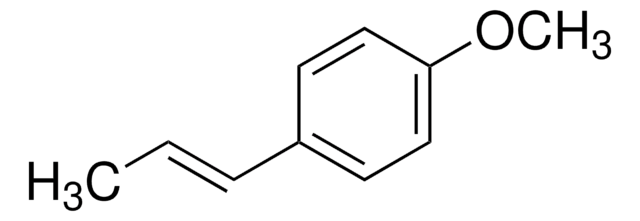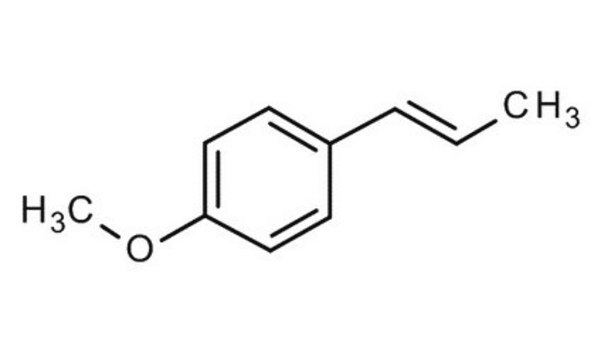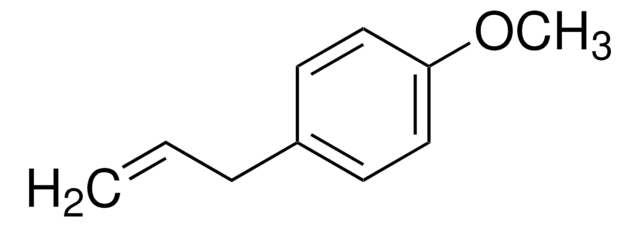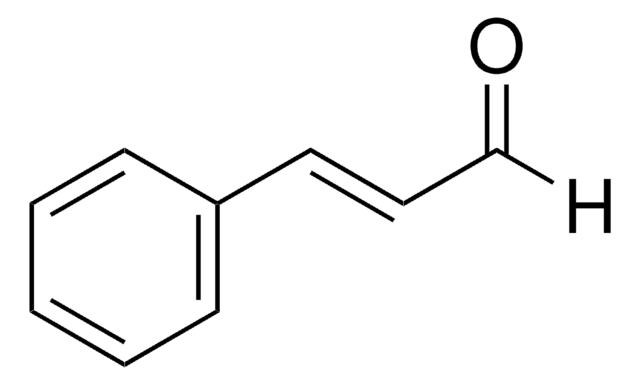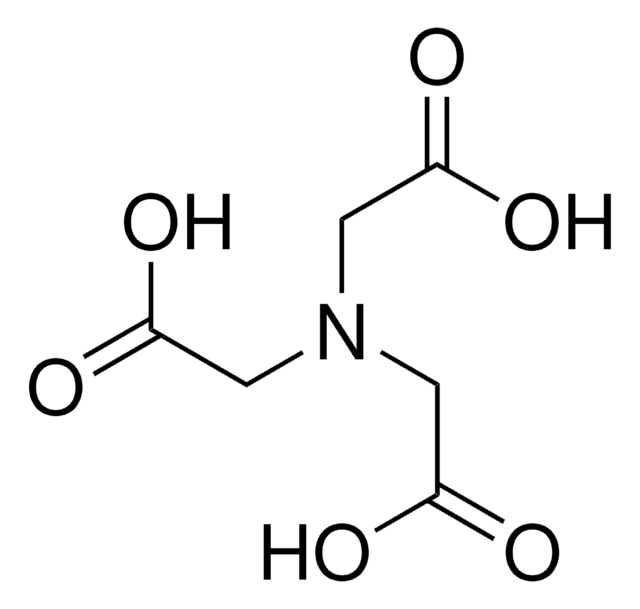W208620
Anethol
natural, 99%, FG
Synonym(s):
trans-Anethole, 4-Propenylanisole, trans-1-Methoxy-4-(1-propenyl)benzene
About This Item
Fragrance grade
Halal
Kosher
natural
Recommended Products
grade
FG
Fragrance grade
Halal
Kosher
natural
Quality Level
Agency
follows IFRA guidelines
reg. compliance
EU Regulation 1223/2009
EU Regulation 1334/2008 & 178/2002
FDA 21 CFR 117
Assay
99%
composition
contains trans-Anethole
refractive index
n20/D 1.561 (lit.)
bp
234-237 °C (lit.)
mp
20-21 °C (lit.)
density
0.988 g/mL at 25 °C (lit.)
application(s)
flavors and fragrances
Documentation
see Safety & Documentation for available documents
food allergen
no known allergens
fragrance allergen
trans-anethole
Organoleptic
anise; sweet
SMILES string
COc1ccc(\C=C\C)cc1
InChI
1S/C10H12O/c1-3-4-9-5-7-10(11-2)8-6-9/h3-8H,1-2H3/b4-3+
InChI key
RUVINXPYWBROJD-ONEGZZNKSA-N
Looking for similar products? Visit Product Comparison Guide
Biochem/physiol Actions
Signal Word
Warning
Hazard Statements
Precautionary Statements
Hazard Classifications
Aquatic Chronic 2 - Skin Sens. 1
Storage Class Code
10 - Combustible liquids
WGK
WGK 2
Flash Point(F)
213.8 °F
Flash Point(C)
101 °C
Choose from one of the most recent versions:
Already Own This Product?
Find documentation for the products that you have recently purchased in the Document Library.
Customers Also Viewed
Our team of scientists has experience in all areas of research including Life Science, Material Science, Chemical Synthesis, Chromatography, Analytical and many others.
Contact Technical Service